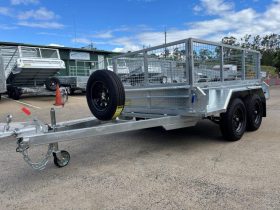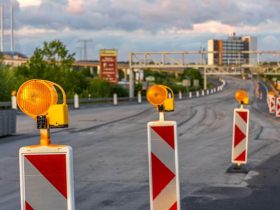On construction sites or in work areas, employees are constantly on the move, and the risk of accidents is high. To avoid repetitive accidents, it is important to prevent potential danger.
The safety barrier is collective protection equipment which allows:
- To secure the site areas in case of danger depending on the work carried out
- Warn staff of danger
- Optimizing the accessibility of worksite areas
To know whether or not to set up a site barrier, the employer must analyze the risks beforehand. Indeed, if there is a risk of falling of object or material on the work area, it is necessary to secure the area as quickly as possible. Quick to install, the industrial protection barrier is an essential element for the protection of workers on construction sites.
There are two main varieties of safety barriers:
- Extendable barrier
- Fixed barrier
An extendable barrier is installed on a site to delimit the risk areas. It deploys over several meters depending on the safety barrier design chosen and prevents access to a dangerous or reserved area.
The extendable safety barriers, also called accordion barriers, can be used outdoors and indoors. There are several formats depending on the demarcated area: 2m, 2.25m, 3m, 4m in length and 1m, 0.4m in height. If the area to be delimited is larger, it is possible to assemble the barriers on a linear basis according to the model.
They are generally red, white, or yellow to ensure optimum visibility from afar, day and night. For better stability, depending on the model chosen, you can seal the extendable site barriers in the ground or fix them using a fixing plate.
Fixed barriers are made up of bars spaced 11 cm apart and are intended to secure areas during demonstrations, for example. Available galvanized or painted, the size of the barrier is one meter high by 2m or 2.5m long. It is possible to assemble the metal barriers between them.
There are also site barriers to delimit dangerous areas in work areas. These construction barriers are red and white to indicate temporary construction sites. Made up of reflective strips, the barriers are easily identifiable by day and by night.











Leave a Reply